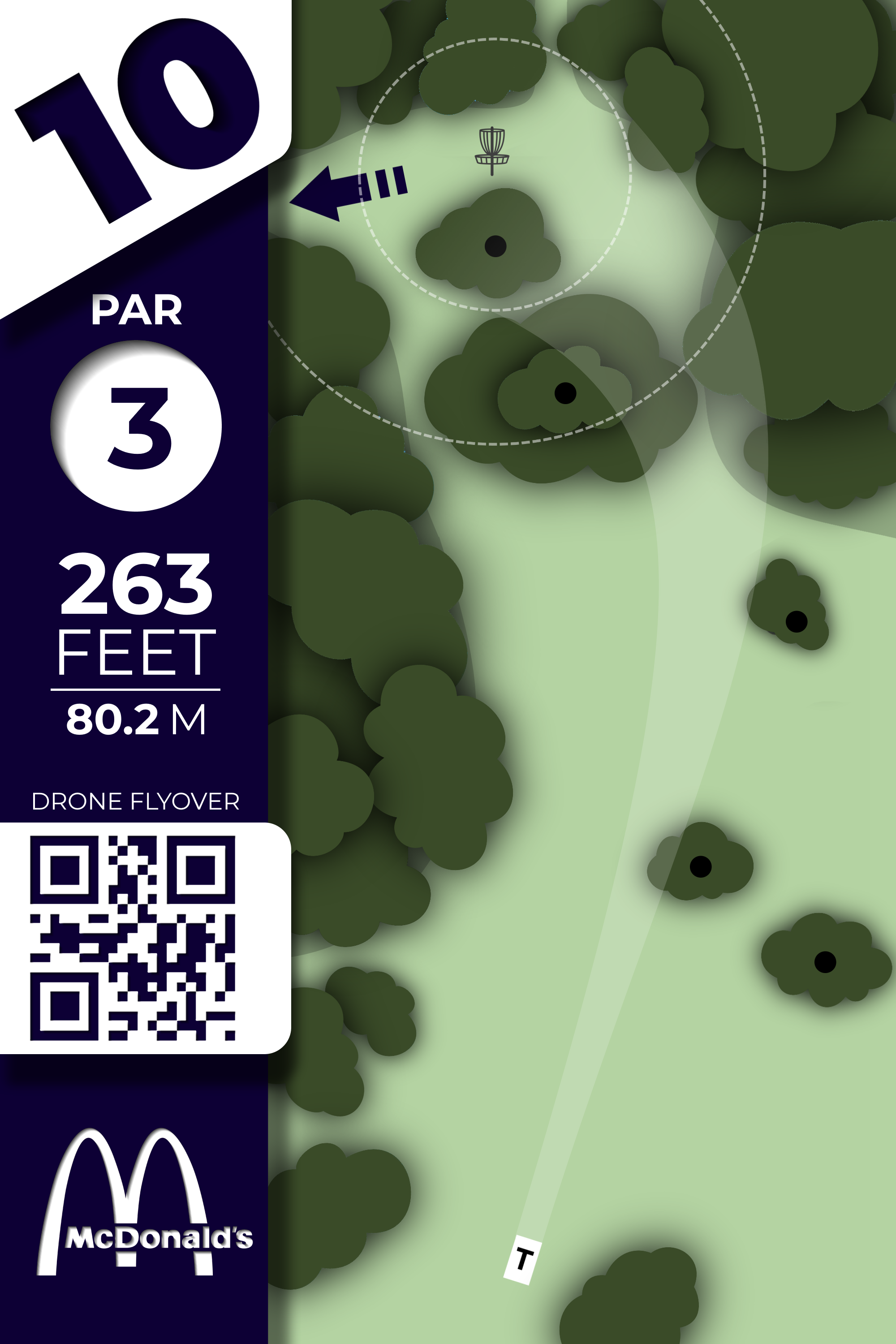Looks pretty good, but I completely echo ru4's comment about the hole # being large enough to to easily see from a distance.
If you stop to think about it, hole # is the only thing that needs to be visible from a distance. Everything else just needs to be legible from the tee/surrounding area.
Tee markers are a valuable aid to navigation. When things are done right, players shouldn't have to use a map or U-Disc to navigate the course.
On a well-marked marked course, upon grabbing your disc after holing out, you should be able to look around and see either a tee marker with the next hole #, or a next tee sign pointing toward the next tee marker.

